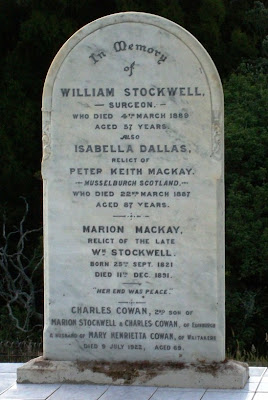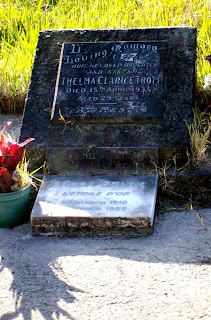Last weekend, I made a break for it and headed north for a few days with Liz of the Mad Bush Farm blog. While up North, she took me through Paparoa one day. The stop that sparked off the first lot of these photos came about because she spotted scarecrows in a hedge. First thing I spotted, though, were the gates with the dates: 1862 and 1962.
Ah, ha! A centenary. And yes, the accompanying plaque backed that up.
Paparoa's first settlers arrived in the spring of 1862, with the first land sales in December that year. It was termed the "Paparoa Special Settlement." According to a report read to the first meeting of the settlers on 9 October 1863, this was because: "... we are physically separated from the Oruawharo or Albertland, and must exist under a separate local government, and be responsible for our own social arrangements and asdvancement, we decline to adopt the term Albertland. Paparoa forms a settlement, and not a limb of any other settlement." (Albertland Gazette, 2 December 1863)
By October 1863, they were making plans to erect houses of worship, were involved with clearing the namesake stream to make it navigable (but a broken dam didn't help matters), hade been granted a weekly postal service, and even had a collection of books as a library -- although the folks at Oruawharo felt the books were for their own exclusive use, much to the chagrin of the Paparoa settlers.
The gates lead through to the North Kaipara A&P Showgrounds. Still actively used, as can be seen by the sign ...
...but with an interesting neglected look to the structures, due to rampant overgrowth. Almost relics, but not quite, not yet.
Next to the showgrounds, the former Paparoa Bowling Club. Not a bowling club anymore though ,so Liz told me. The club still does exist, but just not there anymore.
Could this be where there was a bit of a to-do at the Paparoa Bowling Club in 1937 over inebriated players?
Mr. E. A. Fenwick at a meeting of the Paparoa Bowling Club alleged that on visiting days there was too much liquor on tap. He said it was getting absolutely over the odds, and they now came to a question of drinking or bowls. He alleged that on one occasion when the club was visiting a neighbouring club two players became incapacitated, as far as bowls were concerned at any rate, in his opinion. The club should drop liquor on visitors' days. The proposal met with a storm of protest, speakers stressing that the club members were temperate, and that the Paparoa Club could not be blamed for the sins of others. The proposal lapsed.
(Evening Post, 22 June 1937)
If so, I don't know how well-lubricated players would have handled this -- the ArtyFarties makeover of the old clubrooms. Complete with a door labelled "Jacks" and another "Kittys".
Where players plonked themselves down in the sun waiting for their turn on the green -- that's taken a multi-coloured turn as well.
And then -- there are the scarecrows.
The Welcome to Paparoa signs are part of a series guiding tourists along their way in the district. I personally think the artwork is cool, even if stylised and a bit liberal with geography.
One feature on the artwork is the former National Bank, now the Sahara restaurant. It isn't doing too bad today, seeing as it dates from 1914.
The other iconic image from the signs' artwork is the Paparoa Store. Websites, usually connected with the Sahara, describe it as "historic", but they are not terribly helpful with details as to how historic. Still, it used to have a petrol bowser in front, one of the rectangular ones Shell Oil ones, as can be seen by the marks still on the concrete, and the metal Shell cap still fixed into the surface. Plus, it looks very cool. Hopefully someone has a date somewhere. My guess would be around the time the bank was built.

























































